In a presentation to Silverchair employees as part of our annual professional development-centered “Growth Camp,” Chief Delivery Officer Paul Sanders and VP of Product Sven Molter explored the critical role of innovation in driving organizational success. The presentation shed light on why innovation matters, how it contributes to growth, and the various forms it can take within a company. This article outlines some of the key concepts they covered.
Innovation Is Non-Negotiable
Last year, Silverchair added the core value, “Innovate with purpose and adaptability,” not only to fully acknowledge and embrace the innovative culture we already have, but also as a reminder that it’s non-negotiable for our success. But why is innovation so essential? Simply put, innovation fuels growth, and growth is what sustains an organization over time. As the saying goes, “When you stop growing, you start dying.” This concept reflects a fundamental truth in both nature and business. Without continuous growth, organizations lose their competitive edge, and their ability to attract talent and retain customers diminishes.Defining Innovation
Innovation can be an amorphous concept, though, often defined in different ways by different thought leaders. Despite the variations, a common thread runs through all definitions: innovation involves turning ideas into something that delivers new value. It’s not just about invention or creativity; it’s about applying these ideas in ways that generate tangible benefits and solve real problems, whether through new products, processes, or business models. This ability to transform ideas into value is what drives growth and keeps organizations relevant.Peter Drucker, the “Father of Management,” described innovation as “the specific instrument of entrepreneurship, the act that endows resources with a new capacity to create wealth.” Clayton Christensen, known for his work on disruptive innovation, defined it as “a change in the process by which an organization transforms labor, capital, materials, and information into products and services of greater value.” These definitions highlight that innovation is not just about novelty; it’s about creating something that significantly improves upon what already exists.
How Innovation Drives Growth
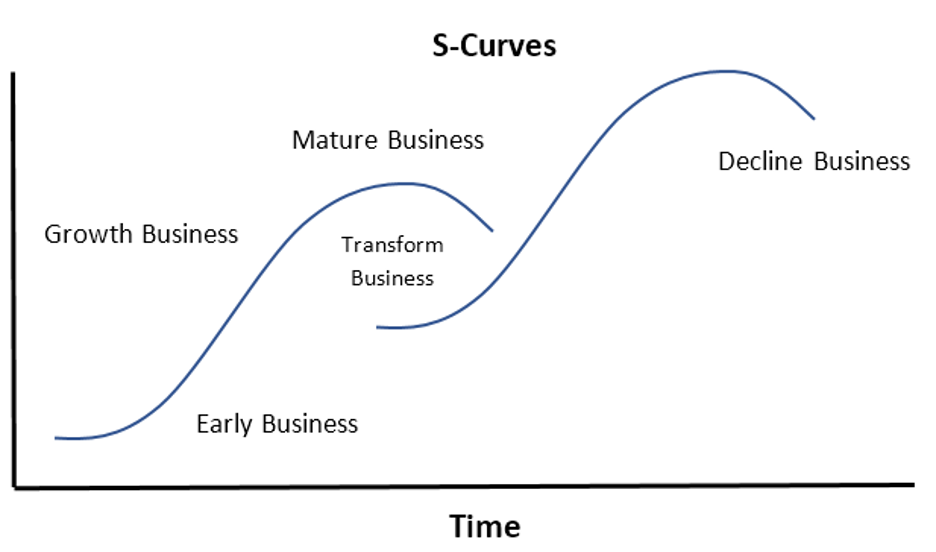
https://seekingalpha.com/article/4063168-baseball-s-curves-and-forecasting
To understand the relationship between innovation and growth, consider the concept of S-curves, a model often used to describe the life cycle of businesses and products. The S-curve illustrates how growth typically occurs in stages: an initial period of slow progress, followed by rapid growth, and eventually reaching a plateau. At this point, companies face a critical juncture known as the “innovation window.” This is where businesses must innovate to jump to the next S-curve or risk decline.
Christiansen’s book The Innovator’s Dilemma describes the difficulties that established companies face when trying to innovate. These companies often struggle to disrupt themselves before an external force does, since they’re already deeply invested in their current business models and fear the risks associated with radical change. However, without innovation, these companies may find themselves outpaced by more agile competitors.
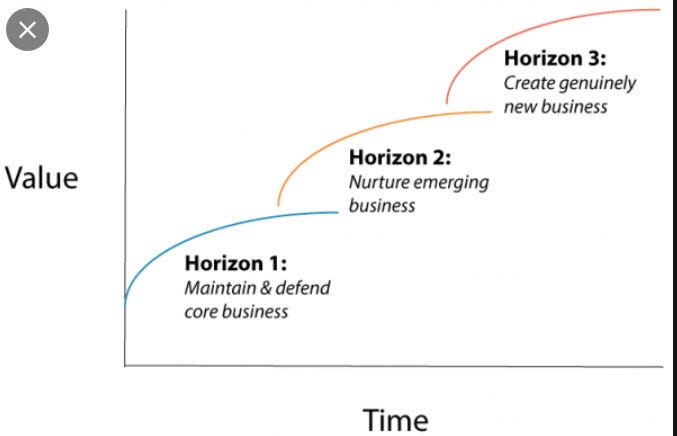
Another relevant framework is McKinsey’s 3 Horizons, which emphasizes the need for continuous innovation across different time frames. According to this model, a healthy business should simultaneously focus on maintaining its core operations (Horizon 1), nurturing emerging businesses (Horizon 2), and exploring new opportunities for future growth (Horizon 3). This multi-horizon approach ensures that innovation is embedded in the organization’s strategy, supporting sustained growth over time.
The Many Faces of Innovation
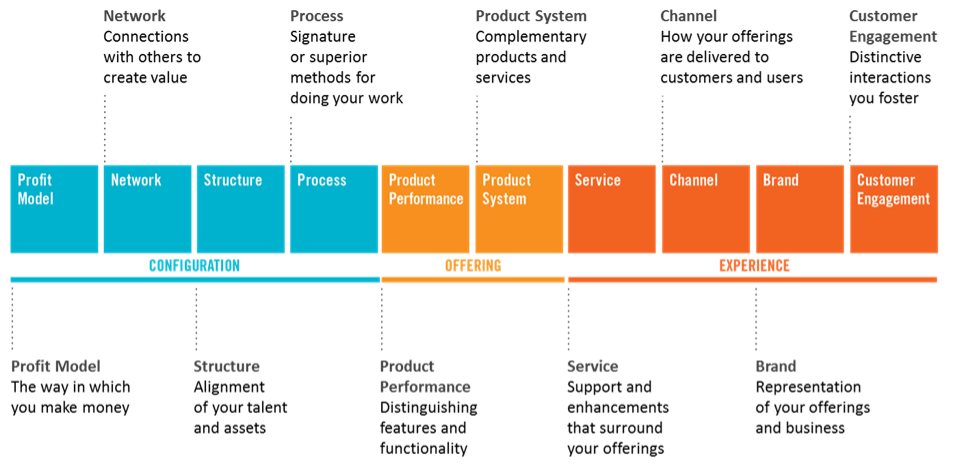
https://cre8tivecapital.com/ten-types-of-innovation/
Innovation is not a one-size-fits-all concept; it can occur in various forms across different parts of a business. There are many frameworks for categorizing innovation, one of which is the 10 Types of Innovation. This framework categorizes innovation based on where it occurs within the business value chain and demonstrates that innovation is not limited to product development; it can happen in processes, services, customer experiences, and even business models.
For example, incremental innovation might involve making small improvements to an existing product, while breakthrough innovation could involve developing an entirely new technology that disrupts the market. Understanding the different types of innovation helps organizations identify where they can innovate and how they can apply different strategies to achieve their goals.
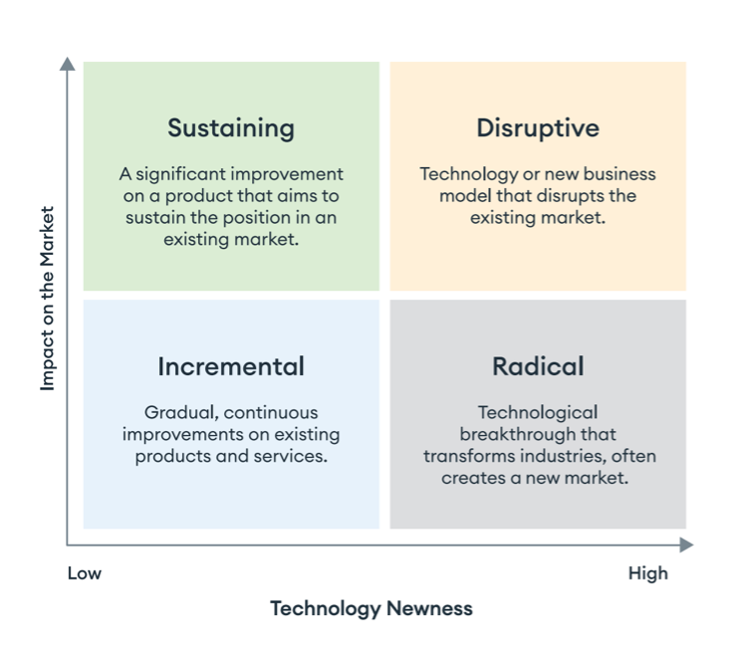 https://www.freshconsulting.com/insights/blog/the-4-types-of-innovation/
https://www.freshconsulting.com/insights/blog/the-4-types-of-innovation/
By recognizing the different flavors of innovation, organizations can better allocate resources, foster the right environment, and implement the most effective strategies to drive their unique growth.
Unleashing Innovators Through Strengths
Given the diverse nature of innovation, it’s clear that different types of innovators are needed at various stages of the business lifecycle. Different archetypes play crucial roles in driving innovation within an organization: Pioneers, Settlers, and Town Planners. Each of these roles, conceived by Simon Wardley, is essential in ensuring that innovation is effective and sustainable throughout life cycles of a business. 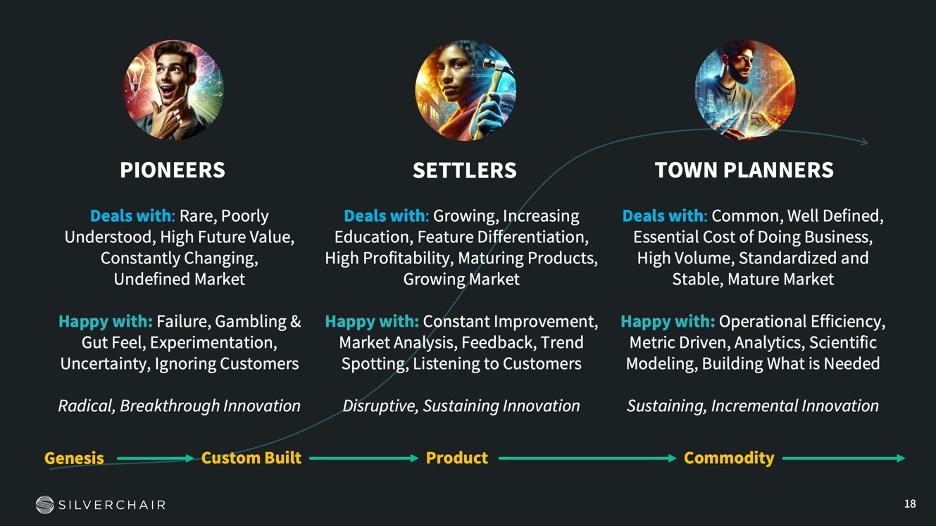
- Pioneers are visionaries who thrive in environments of uncertainty and ambiguity. They are driven by the excitement of exploring uncharted territories and are most effective during the early stages of innovation, where radical ideas are needed to break new ground.
- Settlers take the concepts developed by Pioneers and refine them, turning these ideas into practical, marketable solutions. They focus on creating structure, optimizing processes, and scaling innovations to reach a broader audience.
- Town Planners ensure the long-term sustainability of innovations by establishing efficient systems and processes. They excel in environments where stability and scalability are essential, managing the operational aspects of a mature business.
For example:
- Pioneers might possess strengths like Ideation (generating innovative ideas), Futuristic (visionary thinking), and Activator (taking immediate action).
- Settlers often excel in areas such as Arranger (orchestrating complex scenarios), Maximizer (focusing on strengths to improve existing systems), and Responsibility (taking ownership of established processes).
- Town Planners typically have strengths like Strategic (long-term planning), Discipline (appreciating structure), and Consistency (ensuring uniform application of rules).
Ready. Set. Innovate!
In summary, innovation is crucial at every stage of a company’s development, and understanding the different types of innovators—and how to leverage their strengths—can make the difference between stagnation and thriving. There are myriad frameworks out there for executing the process of innovation, from Design Thinking to Lean Startup to Jobs to be Done.By fostering a culture that recognizes and nurtures diverse innovation styles and strengths, organizations can ensure they are well-equipped to innovate continuously and successfully through all phases and frameworks.